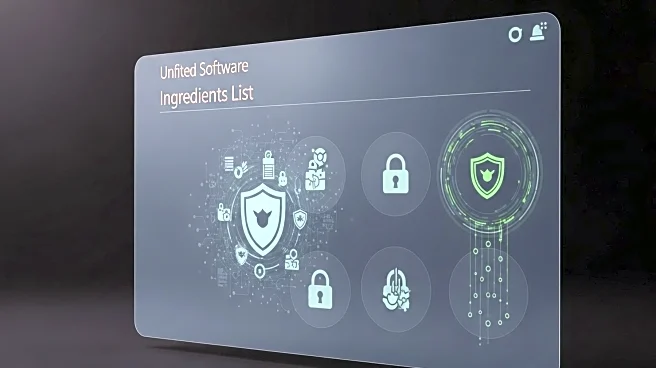What's Happening?
Cybersecurity and intelligence agencies from 15 countries, including the United States, have released a joint guidance document titled 'A Shared Vision of Software Bill of Materials (SBOM) for Cybersecurity.' This document, published on September 3, aims to strengthen global supply chain security by providing a common definition and value proposition for SBOMs. It outlines the roles of SBOM producers, end-users, operators, and national cybersecurity organizations, encouraging widespread adoption across sectors and borders. The guidance also emphasizes harmonized technical implementations to reduce complexity and cost, integrating SBOMs into security workflows for better risk management. The initiative reflects a growing international consensus on the importance of software transparency in securing the digital supply chain.
Why It's Important?
The release of this joint guidance is significant as it represents a coordinated international effort to address cybersecurity challenges associated with complex software supply chains. By promoting transparency through SBOMs, organizations can better understand the components of their software, which is crucial for identifying vulnerabilities and managing risks. This initiative is expected to enhance the resilience of digital infrastructure globally, benefiting industries reliant on secure software systems. The harmonization of SBOM practices across countries could lead to more effective cybersecurity measures, reducing costs and complexities for businesses and governments alike.
What's Next?
The guidance document sets the stage for further international collaboration on SBOM implementation. Stakeholders are encouraged to adopt SBOM practices and integrate them into their cybersecurity strategies. Future steps may include harmonizing technical implementations to ensure widespread adoption and sustainable use of SBOMs. As countries work together to align their approaches, the effectiveness of SBOMs in improving cybersecurity is expected to increase, potentially leading to legislative actions that mandate their use in critical sectors.
Beyond the Headlines
The emphasis on SBOMs highlights the ethical and legal dimensions of software transparency. As organizations adopt SBOM practices, they must navigate the balance between transparency and privacy, ensuring that sensitive information is protected while vulnerabilities are addressed. This initiative could also drive cultural shifts within industries, promoting a mindset of proactive risk management and collaboration across borders.












